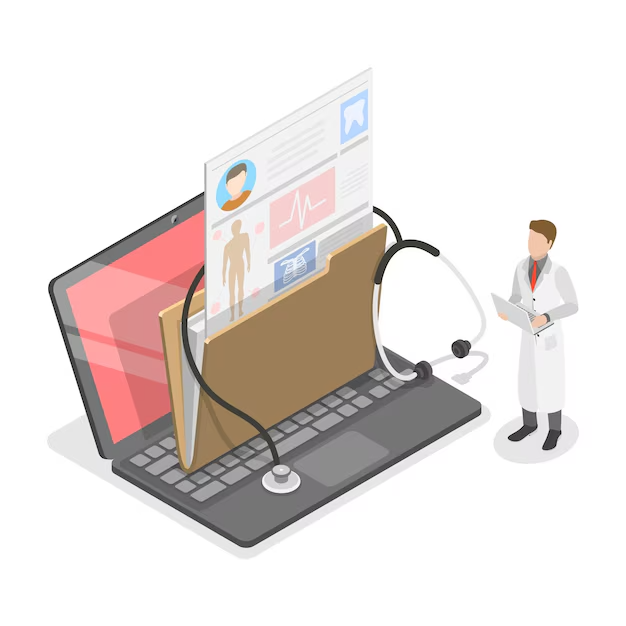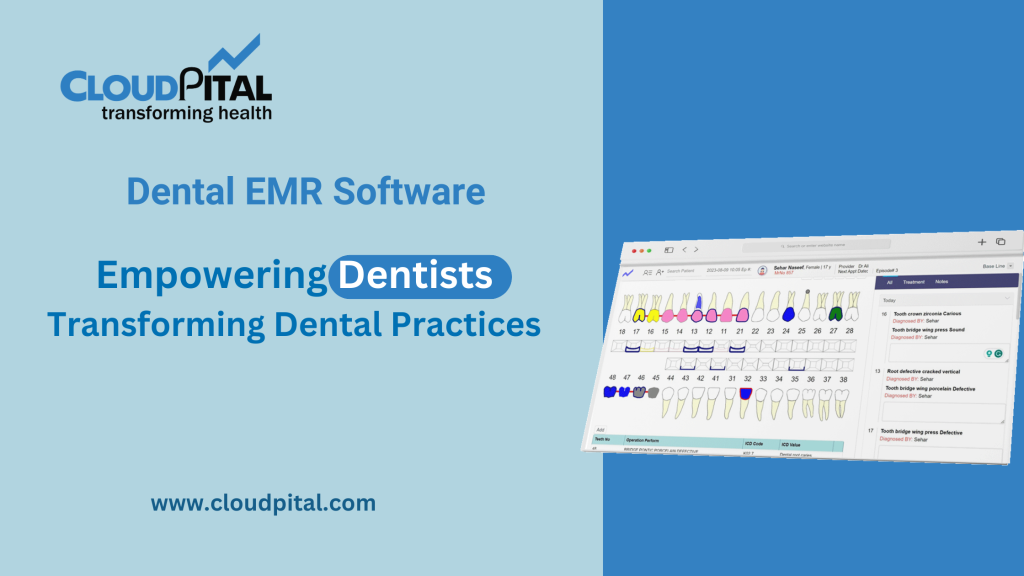Cloudpital # 1 is one of the top EHR Software and telemedicine has revolutionized the delivery of healthcare through remote consultations, enhanced patient data availability, and better clinical decision-making. With the growth of telehealth services, especially in the wake of the COVID-19 pandemic, EHR systems have become crucial in ensuring smooth, effective, and secure virtual care.
Click to Start Whatsapp Chatbot with Sales
Mobile: +966547315697
Email: sales@bilytica.com
Cloudpital # 1 EHR Software

Improving Remote Patient Care
EHR Software act as a foundation for telemedicine by providing healthcare professionals with immediate access to complete patient information. During virtual consultations, clinicians are able to:
- Access patient medical history, such as prior diagnoses, medications, allergies, and treatment regimens.
- Real-time update of records, ensuring continuity of care.
- Access lab results, imaging reports, and other essential data for well-informed decision-making.
Through the integration of EHR with telemedicine platforms, providers can provide high-quality care from remote locations, decreasing the demand for in-office visits while ensuring patient safety and efficiency.
Workflow Efficiency Simplification
Another major advantage of EHR in telemedicine is workflow automation. EHR systems simplify administrative procedures by:
- Scheduling virtual appointments with ease.
- Automating intake forms and gathering medical history prior to consultations.
- Electronic prescription generation and direct transmission to pharmacies.
- Enabling real-time documentation and note-taking.
By removing the need for manual data entry and unnecessary administrative work, EHR lightens the workload of healthcare providers, enabling them to spend more time on patient interactions.
Enabling Clinical Decision-Making
EHR systems that are integrated with telemedicine platforms support clinical decision-making through decision support tools. Capabilities include:
- AI-based diagnostic support and treatment suggestions.
- Drug interaction, allergy, and contraindication alerts.
- Predictive analytics for the early detection and management of disease.
These features enable clinicians to provide evidence-based care, minimizing errors and enhancing patient outcomes.
Secure Data Sharing and Interoperability
Interoperability is crucial for an effective telemedicine system. EHR Software provide secure and standardized data sharing between healthcare providers, laboratories, pharmacies, and insurance organizations. This ensures:
- Continuity of care between various healthcare environments.
- Decreased duplication of diagnostic tests and medical procedures.
- Improved coordination among multidisciplinary care teams.
EHRs compliant with Health Level Seven (HL7) and Fast Healthcare Interoperability Resources (FHIR) standards support easy integration with a wide range of telehealth applications, with consistent data and availability.

Improving Patient Engagement and Remote Monitoring
Telemedicine platforms integrated with HIM Management empower patients by providing them with access to their medical records, treatment plans, and health summaries. Some of the features include:
- Secure patient portals for interacting with healthcare providers.
- Mobile health (mHealth) applications for remote monitoring of chronic diseases.
- Automated medication reminders and follow-up appointment reminders.
These features encourage patient engagement, self-management, and treatment plan adherence, ultimately enhancing health outcomes.
Decreasing Healthcare Costs and Increasing Access
Telemedicine in conjunction with EHR systems decreases healthcare costs by reducing hospital visits, unnecessary testing, and administrative burdens. Telemedicine also increases access to healthcare services for patients in:
- Rural and underserved populations.
- Elderly communities with mobility impairments.
- Those with chronic illness that necessitates continuous observation.
Through the utilization of EHR-integrated telemedicine, health organizations can optimize resource distribution and provide more budget-friendly care.
Enforcing Compliance and Data Protection
EHRs are pivotal to enforcing telemedicine compliance with medical regulations such as:
- HIPAA (Health Insurance Portability and Accountability Act) for privacy and security of data.
- GDPR (General Data Protection Regulation) for the protection of patient data in the EU.
- HITECH (Health Information Technology for Economic and Clinical Health Act) for electronic record use and security standards.
High-level security functions like data encryption, multi-factor authentication, and audit trails guard patient data and deter unauthorized use.
Telemedicine Billing and Reimbursement Simplification
Telemedicine solutions integrated into EHR simplify billing and reimbursement by:
- Automating medical coding and insurance claims submission.
- Monitoring virtual consultations for proper billing.
- Ensuring compliance with telehealth reimbursement policies from Medicare, Medicaid, and private insurers.
This efficiency reduces claim denials and accelerates provider payments, improving financial sustainability for healthcare institutions.
Enhancing Population Health Management
By aggregating and analyzing telehealth data, EHR systems contribute to population health management efforts. AI-powered analytics help identify:
- Trends in disease outbreaks and patient demographics.
- High-risk patients who require proactive interventions.
- Gaps in healthcare accessibility and resource distribution.
This evidence-based method allows policymakers and healthcare organizations to drive targeted public health interventions.
Overcoming Challenges in EHR-Telemedicine Integration
While having many advantages, integrating Health Information Management with telemedicine also faces challenges such as:
- Technical interoperability issues: Securing varied systems are able to communicate well.
- Provider adoption and training: Training healthcare providers with new workflows.
- Data security risks: Enhancing cybersecurity measures to avoid breaches.
- Reimbursement complexities: Managing changing telehealth billing policies.
To face these challenges, healthcare organizations need to invest in strong IT infrastructure, regular employee training, and regulatory compliance systems.
Conclusion
EHR systems are a key enabler of telemedicine success, allowing seamless, secure, and data-driven remote delivery of healthcare. Through workflow automation enhancement, clinical decision support, interoperability, patient engagement, and compliance, EHRs make telemedicine not only easy but also effective in enhancing patient care.
As telemedicine advances, combining AI, blockchain, and machine learning with EHR will increase its functionality even more, rendering healthcare more accessible, personalized, and efficient. Healthcare organizations adopting EHR-integrated telemedicine solutions will be well-equipped to address the increased demand for virtual care while upholding high standards of patient safety and quality care.
Click to Start Whatsapp Chatbot with Sales
Mobile: +966547315697
Email: sales@bilytica.com
What role does EHR Software play in telemedicine? similar software solutions prices were updated on 2025-05-01T00:43:34+00:00 in Saudi Arabia in Mecca, Medina, Riyadh, Khamis Mushait, Yanbu, Jeddah, Dammam, Unaizah, Uqair, Ha’il, Ta if, Al Bahah, Dhahran, King Abdullah Economic City, Najran, Diriyah, Qatif, Khafji, Jubail, Abqaiq, List of Cities and Towns in Saudi Arabia, Ras Tanura, Turubah, Jazan Economic City, Knowledge Economic City, Medina, Khobar, Abha, Tabuk, Saudi Arabia, similar software solutions prices were updated on 2025-05-01T00:43:34+00:00 We also provide in Saudi Arabia services solutions company in Hafar Al-Batin, Udhailiyah, Al-Awamiyah, Hofuf, Hautat Sudair, Buraidah, Tayma, Duba, ‘uyayna, Saihat, Al-Kharj, Al-ula, Jizan, Rumailah, Ar Rass, Arar, Shaybah, Al Majma’ah, Rabigh, Dhurma, Haradh, List of Saudi Cities by Gdp Per Capita, Badr, Sudair Industrial City, Baljurashi, Shaqraa, Al-Khutt, Habala, Ad Dawadimi, Dawadmi, Layla, similar software solutions prices were updated on 2025-05-01T00:43:34+00:00 Price is SAR 100 and this was updated on updated on 2025-05-01T00:43:34+00:00 similar What role does EHR Software play in telemedicine? software solutions prices were updated on 2025-05-01T00:43:34+00:00 in Saudi Arabia in Haql, Afif, Al-Abwa, Farasan, Al-Jaroudiya, Thadig, Al-Thuqbah, Al Wajh, Almardmah, Al-Zilfi, Muzahmiyya, Prince Abdul Aziz Bin Mousaed Economic City, Tharmada’a, Skaka, Um Al-Sahek, Sharurah, Tanomah, Bisha, Dahaban, Al Qunfudhah, Qurayyat, Saudi Arabia, Ha’ir, as Sulayyil, Al Lith, Turaif, Al-Gway’iyyah, Samtah, Wadi Ad-Dawasir, Az Zaimah, Safwa City, Jalajil, Harmah, Mastoorah, Hotat Bani Tamim, Jabal Umm Al Ru’us, Rafha, Qaisumah, Al-Ghat, Hajrah, Al-Hareeq. Excerpt: Jeddah (also spelled Jiddah, Jidda, or Jedda; Arabic: Jidda) is a Saudi Arabian city located on the coast of the Red Sea and is the major urban center of western Saudi Arabia similar software solutions prices were updated on 2025-05-01T00:43:34+00:00 Price is SAR 100 and this was updated on updated on 2025-05-01T00:43:34+00:00



